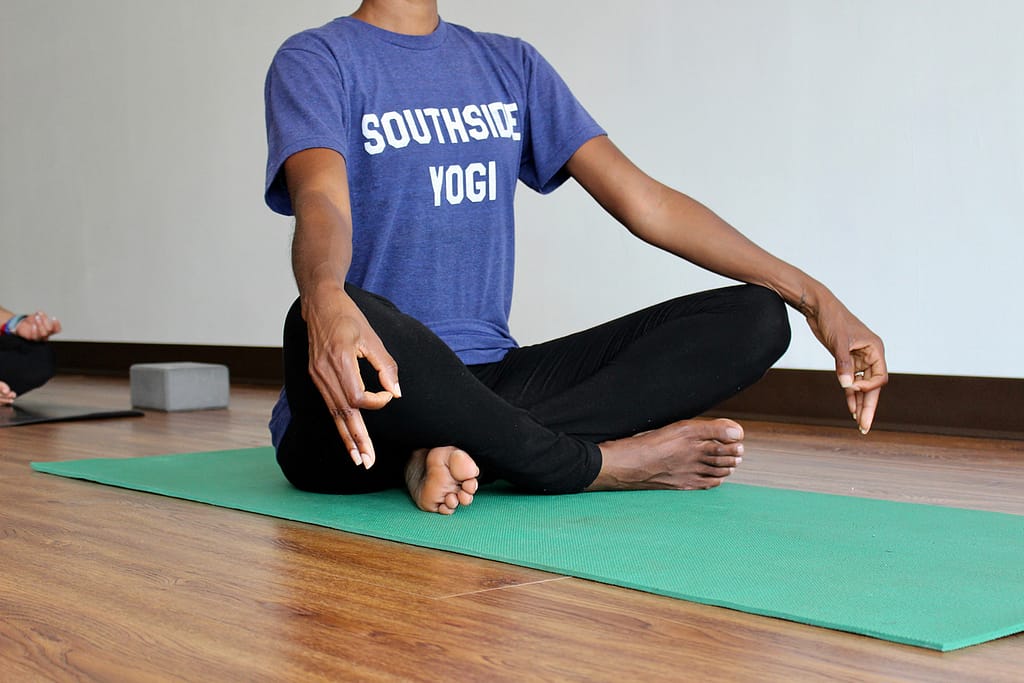Yoga was originally communicated in the ancient Indian language Sanskrit. Over time, the Sanskrit terms were translated into English, but because there are major differences in the languages, it is difficult to define the Sanskrit terms with complete accuracy in English. It is important to remember this, for multiple translations of terms or larger texts may present the concepts or definitions in slightly different ways.
Below are some commonly used Sanskrit terms that you may have heard in your weekly yoga classes. The definitions provided here were curated from the study of various sources and capture what we believe to be the truest essence of the word.
Asana: movement or gesture of the body.
- Asana practice is used to prepare the physical body for meditation as the release of tension makes it easier to rest in stillness. This is most easily exemplified by the practice of Savasana at the end of every class. Can you imagine resting that deeply before moving the body around the mat? [I can’t!]
Dharma: life’s purpose; law of living truth.
- Dharma comes from the Sanskrit root dhri, which means “to preserve or maintain.” By living Dharma, we live our truth. When we accept our purpose in life and serve the collective through the actions of that purpose, we cultivate universal harmony and order.
Drishti: focal point of attention used to attune physical and energetic balance.
- By finding a drishti while practicing a balancing asana, such as Vrksasana (Tree), the body is able to stabilize and release other visual distractions. The same concept applies to the energetic body during meditation. [More to come on this subject in the future]
Mantra: a sound vibration spoken silently to oneself to draw the mind inward for meditation.
- A mantra gives the mind something to focus on so that the meditator can let go of outside distractions with more ease. Mantras can be individual affirmations with meaning or initiatory sounds without definitive meaning. Mantras given to an individual in an initiatory practice, such as Transcendental Meditation, are vibrations with a larger, undefined meaning, but significance in the impact of the vibration itself on the person’s journey inward.
Mudra: gesture or seal made with the hands, body, or mind.
- Most often when you hear the word mudra, it is referencing the positioning of the hand and fingers. Hand, or hasta, mudras are gestures of the fingers and hand that symbolize a concept in yogic philosophy and direct the flow of prana [definition below], or life force, in an area of the body or the mind.
Namaste: I bow to you.
- There is a lot of conversation in the yoga community about the appropriate uses of this term, but it is one of the Sanskrit terms that has a very literal translation available- nama, to bow, te, you. In essence, it is used as a sign of respect for all the yoga practitioners in the room, honoring the divinity within each of us.
Om: the universal or cosmic vibration or mantra.
- Om, or Aum, is the mantra of the universe. It is said to be the origin sound of the cosmos and a vibratory expression of consciousness. Chanting Om before or after a yoga class aids in the yogi or yogini’s ability to experience union beyond the body and mind.
Prana: life force energy.
- Prana is the life sustaining, intangible energy within us and all around us. When practicing asanas, pranayama [definition below], and releasing physical and subtle tension in the body, we open up channels for the energy to flow more easily. We become a conduit for the flow of prana as these channels open and can experience equanimity from within both on and off the mat.
Pranayama: control of the breath to facilitate the flow of prana.
- The breath can be thought of as the vehicle by which prana flows through the body. When we establish a connection and learn to control the breath, we can better facilitate our own prana flow in the body.
Yoga: experiencing the union between dualities; body/mind, physical/energetic, conscious/unconscious.
- It is often simply put that yoga means union, but there is more to it. Our bodies and minds are already in union, but we forget. The practice of yoga is the practice of remembering and experiencing that union in real life. Through asana, pranayama, and meditation, we are able to experience the felt sense of union with our own bodies and minds and with that of the collective.
If you have any questions about these Sanskrit terms or would like to add anything to our definitions, leave a comment below or reach out to us at admin@sanskritmoon.com, Facebook, or Instagram.



